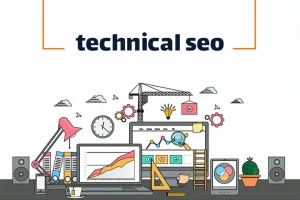Single-page website design has become a popular choice in the digital world, especially for businesses and projects that are looking to simplify the user experience and increase online engagement. By focusing on a single page, these types of sites make all the information available to users without the need to navigate between different pages. While many people may prefer multi-page designs, single-page sites have many advantages due to features such as fast loading, improved user experience, and better optimization for mobile and SEO. Today and in this article, we are going to introduce and review single-page website design and its benefits from 0 to 100. Follow us until the end.
What is a single page site?
A single page website is a type of website design where all of the content is on a single page and scrolling is used to display information. These types of sites have become very popular due to their simplicity, fast loading speed, and convenient user experience. Single page sites are usually designed to introduce brands, specific products, limited services, or personal projects, and instead of using different menus and multiple pages, all information is displayed linearly on a single page. Among the features of these types of sites are responsive design and mobile optimization, since most Internet users use smartphones to browse the web.
One of the most important advantages of single page sites is that they are optimized for SEO. By focusing on one page, its content can be optimized in a precise and targeted way for specific keywords. These sites usually load quickly, reducing bounce rates, which can help increase a site’s ranking in search engine results. These types of websites are also designed to provide an improved user experience, as users can easily access all the information they need without having to search through multiple pages. Single-page sites are commonly used for advertising campaigns, online resume websites, and landing pages.
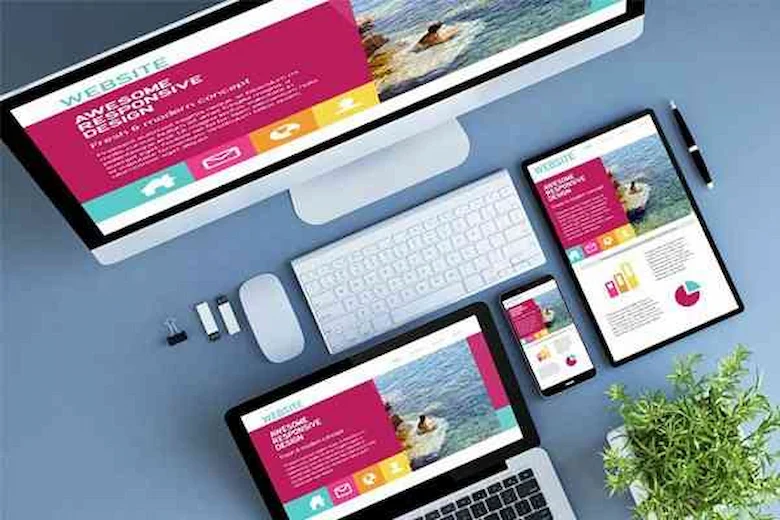
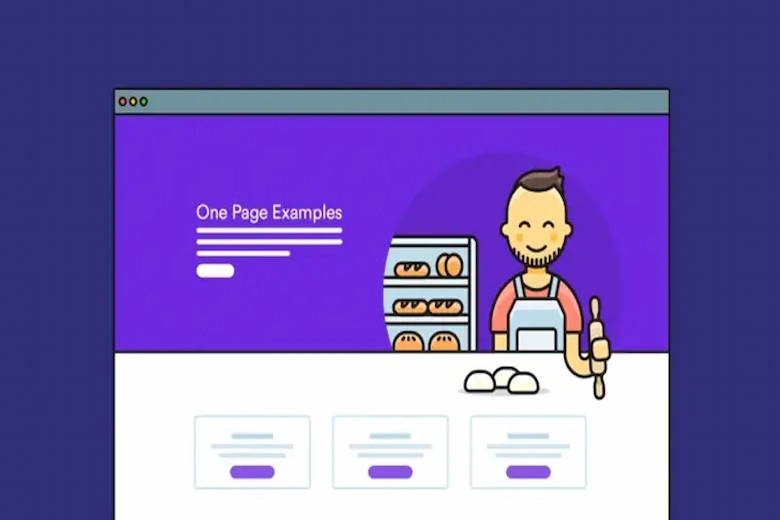
Basics of single page website design
1. Simplicity and clarity in design
One of the basic principles of single page website design is simplicity and clarity in the presentation of information. Single-page websites are usually designed with a focus on a specific goal, so unnecessary complexity should be avoided. Using a minimalist design that only provides the user with the necessary information makes it easy for visitors to navigate the site and have a good experience. This simplicity in design improves the loading speed of the site and also sends the message to search engines that your site is quality and user-friendly, which in turn can help with SEO.
2. Clear structure and appropriate division
In single-page sites, it is essential to properly divide the content into different sections. To achieve this, vertical scrolling should be used and each section should be identified with clear and recognizable titles. This division should be such that the visitor can easily access each part of the site and not miss any important content. At the same time, it is important to note that for SEO, the content structure should also be relevant and optimized with keywords, so that search engines can index the content correctly.
3. Responsive design and mobile optimization
With a significant portion of internet users accessing websites via smartphones, responsive design is a vital principle in single-page website design. Responsive design means that the site should automatically adapt to different screen sizes (phone, tablet, desktop) and provide an optimal user experience on any device. Search engines give higher scores to responsive sites, which improves rankings in search results. In addition, fast loading of the site on mobile devices is also an important factor to consider.
4. Use proper navigation
Since single-page sites usually consist of just one page, it is essential to create a proper and logical navigation for users. Tools such as sticky menus or scroll buttons are used to allow the user to quickly access different sections of the site. Also, using smooth and attractive animations when moving between sections can improve the user experience. Optimizing this navigation is also important for SEO, as search engines give higher scores to sites that have easy access to content.
5. Optimize loading speed
Site loading speed is a critical factor in single page website design. Sites that load quickly provide a better user experience for visitors and reduce the likelihood of them abandoning the site. For this reason, using good quality images and compressing files is essential to optimize loading speed. Search engines like Google prefer sites with fast loading speeds, which helps with site SEO. Therefore, reducing load time can have a direct impact on a site’s ranking in search results.
6. Use a clear call to action
On single-page sites, the purpose of the site and the call to action should be clearly stated. These calls to action should be placed in various places on the site to encourage users to take an action, such as purchasing, registering, or contacting you. It is essential to optimize these buttons for SEO with relevant keywords and using an attractive and noticeable design. Also, these buttons should be easily visible so that users can quickly reach their desired goal without confusion. Using effective calls to action can increase user engagement and convert more visitors into customers.
7. Engaging and SEO-optimized content
Content is always king, and this principle applies to single page website design as well. The content of the site should be carefully written in a way that is both engaging and useful for users and optimized for search engines. Using relevant keywords in titles, meta descriptions, and body content can help search engines index your site better. In addition, visual and video content should also be in harmony with the texts and optimized for SEO so that the site can rank well in search results.
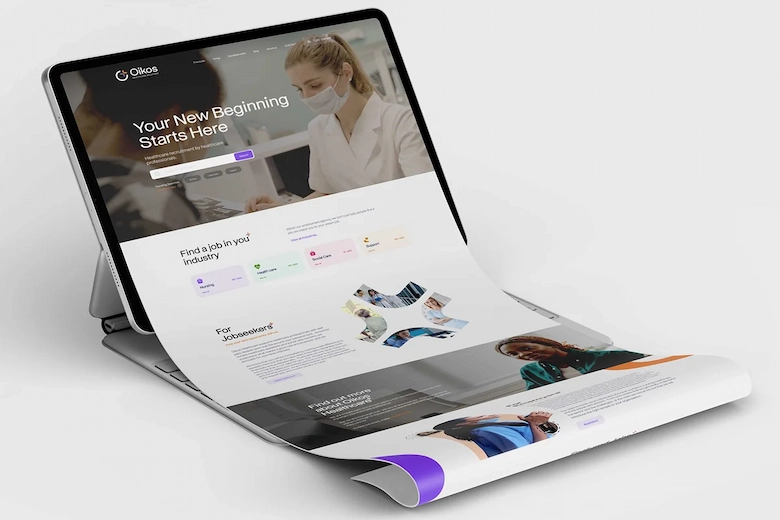
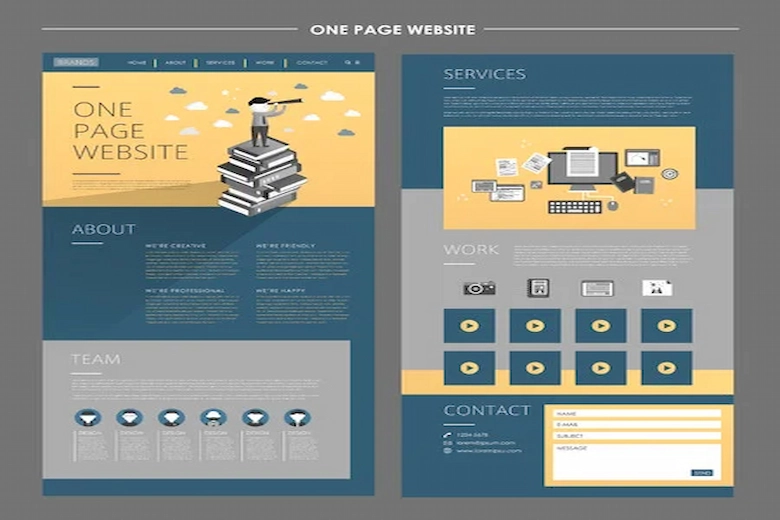
Advantages of single page website design
1. Faster loading
One of the biggest advantages of single-page sites is their high loading speed. Since all the content is on one page and there is no need to load multiple pages, loading times are drastically reduced. This not only improves the user experience, but is also important from an SEO perspective. Search engines like Google prefer sites that load quickly and give them higher rankings. For this reason, single-page sites that load faster tend to rank better in search results and attract more visitors.
2. Improved user experience
Single-page sites offer a much more convenient user experience. Users do not need to search through different pages and can access all the information they need by scrolling. This type of design increases user engagement with the site and reduces the bounce rate. Since users reach their goal faster, they are more satisfied with the site experience and are more likely to return to the site. In addition, single-page design helps improve the user experience on mobile devices, since most Internet users use smartphones to browse the web.
3. Simplify the navigation process
In single-page sites, navigation is extremely simple and uncomplicated. Because all the information is on one page, users do not need to move between different pages and can easily access different parts of the site using simple menus and navigation tools (such as scroll buttons). This type of design prevents confusion for users and enables them to reach the information they want without any effort. Also, this design helps search engines to easily identify the structure of the site and consider better ranking for it.
4. Suitable for advertising campaigns and landing pages
One of the main uses of single-page sites is in advertising campaigns and landing pages. These types of sites are good at conveying a simple and direct message to the audience and encouraging users to take a specific action (such as purchasing, registering or downloading). Given that these sites focus on only one specific goal, they can effectively increase the conversion rate. Carefully optimizing these pages for specific keywords and using effective calls to action makes these sites very successful in attracting and converting the audience.
5. Suitable for responsive designs
Single page website design can easily be implemented in a responsive or reactive manner, which means that the site is compatible with various devices and different screen sizes. In this era when most users use smartphones and tablets to browse the internet, responsive design is of utmost importance. A single-page website that is properly optimized for mobile provides a great user experience. This feature helps the website rank better in search results and also optimizes the user experience.
6. Improve SEO by focusing on a specific goal
Single-page sites naturally help with SEO because all of the site’s content is concentrated on one page, allowing for greater focus on specific keywords. This type of design allows you to optimize the page content precisely and with high precision for search engines. Additionally, because the page content is limited and unnecessary distractions are avoided, search engines can index the page more easily. This results in better rankings in search results and more traffic.
7. Lower cost in design and maintenance
Single-page sites are usually less expensive to design and develop than multi-page sites. This is because there are fewer pages to design and maintain. Additionally, it is easier to update and make changes to a single-page site because only one page needs to be updated. This feature allows businesses to save on site maintenance and management costs. For small businesses and startups, this feature can be a huge advantage.
8. Increase user engagement
With proper design, single-page sites can significantly increase user engagement. Attractive, user-friendly designs, combined with relevant and inviting content, make visitors stay longer on the site and engage more with its content. Especially by using animations and motion effects, you can make the user experience more engaging and encourage users to interact more with the site. This increased engagement not only increases user satisfaction, but also sends a positive signal to search engines that your site is valuable and useful.
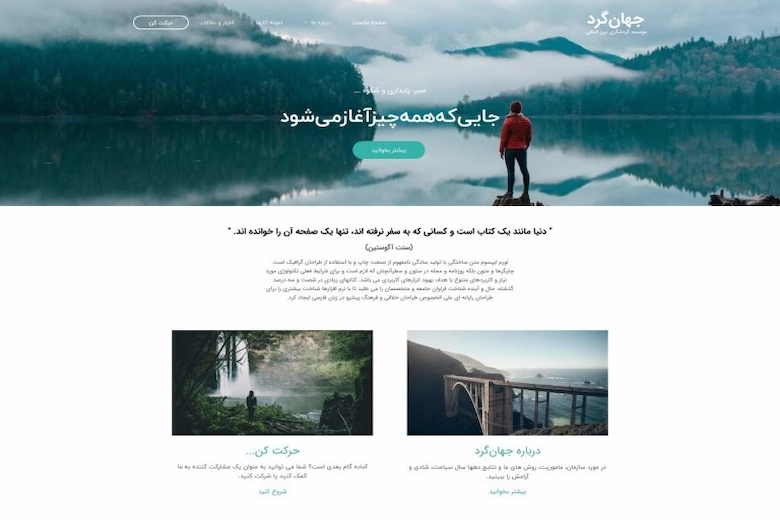
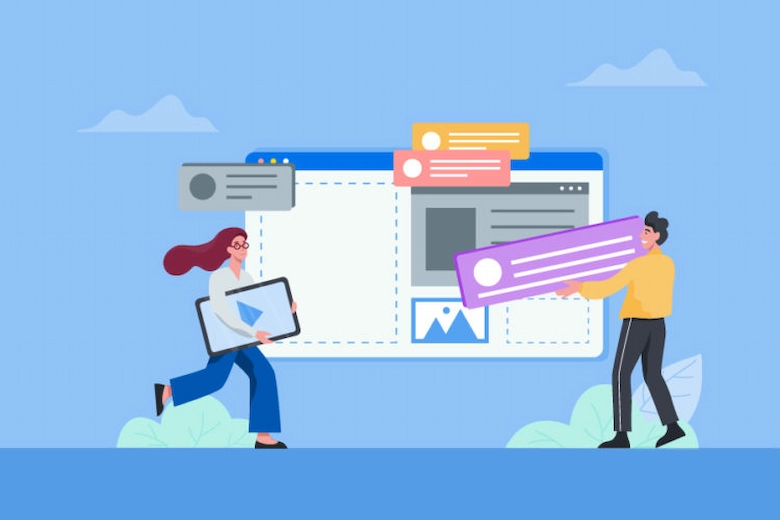
Final Words
As you can see, in this article, we have introduced and reviewed the single page website design from 0 to 100. We have learned that single page website design is one of the best choices for many businesses and projects due to its simplicity, high speed, and efficiency in attracting users. By adhering to the principles of optimal design, you can provide an attractive user experience and also benefit from many benefits such as improving SEO, reducing costs, and increasing user interaction. If you are also looking for a website design for your business, a single-page website can be a suitable option for you that you can easily optimize for your specific goals. Thank you for following us until the end of this article, we hope that the content provided has been useful to you.
Amood Design and Branding Group specializes and works professionally in the field of digital marketing activities such as logo design, banner and poster design, brochure and catalog design, office set design, brandbook design, SEO, website design, etc. Dear friends, you can contact us for more information and free consultation through communication bridges.







